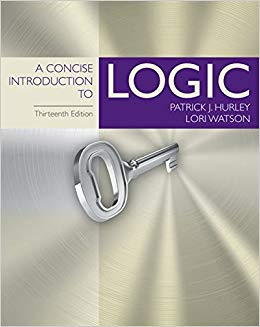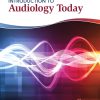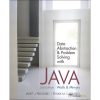Test Bank for A Concise Introduction to Logic 13th Edition
$35.00 Original price was: $35.00.$26.50Current price is: $26.50.
Test Bank for A Concise Introduction to Logic 13th Edition
Test Bank for A Concise Introduction to Logic 13th Edition

Product details:
- ISBN-10 : 1305958098
- ISBN-13 : 978-1305958098
- Author: Patrick Hurley
Over a million students have learned to be more discerning at constructing and evaluating arguments with the help of A CONCISE INTRODUCTION TO LOGIC, 13th Edition. The text’s clear, friendly, thorough presentation has made it the most widely used logic text in North America. The book shows you how the content connects to real-life problems and gives you everything you need to do well in your logic course. Doing well in logic improves your skills in ways that translate to other courses you take, your everyday life, and your future career. The accompanying technological resources offered through MindTap, a highly robust online platform, include self-grading interactive exercises, a new digital activity that allows you to apply the skills you learn to a real-world problem, and videos to reinforce what you learn in the book and hear in class.
Table contents:
Part I: INFORMAL LOGIC.
1. Basic Concepts.
Arguments, Premises, and Conclusions. Exercise. Recognizing Arguments. Exercise. Deduction and Induction. Exercise. Validity, Truth, Soundness, Strength, Cogency. Exercise. Argument Forms: Proving Invalidity. Exercise. Extended Arguments. Exercise.
2. Language: Meaning and Definition.
Varieties of Meaning. Exercise. The Intension and Extension of Terms. Exercise. Definitions and Their Purposes. Exercise. Definitional Techniques. Exercise. Criteria for Lexical Definitions. Exercise.
3. Informal Fallacies.
Fallacies in General. Exercise. Fallacies of Relevance. Exercise. Fallacies of Weak Induction. Exercise. Fallacies of Presumption, Ambiguity, and Illicit Transference. Exercise. Fallacies in Ordinary Language. Exercise.
Part II: FORMAL LOGIC.
4. Categorical Propositions.
The Components of Categorical Propositions. Exercise. Quality, Quantity, and Distribution. Exercise. Venn Diagrams and the Modern Square of Opposition. Exercise. Conversion, Obversion, and Contraposition. Exercise. The Traditional Square of Opposition. Exercise. Venn Diagrams and the Traditional Standpoint. Exercise. Translating Ordinary Language Statements into Categorical Form. Exercise.
5. Categorical Syllogisms.
Standard Form, Mood, and Figure. Exercise. Venn Diagrams. Exercise. Rules and Fallacies. Exercise. Reducing the Number of Terms. Exercise. Ordinary Language Arguments. Exercise. Enthymemes. Exercise. Sorites. Exercise.
6. Propositional Logic.
Symbols and Translation. Exercise. Truth Functions. Exercise. Truth Tables for Propositions. Exercise. Truth Tables for Arguments. Exercise. Indirect Truth Tables. Exercise. Argument Forms and Fallacies. Exercise.
7. Natural Deduction in Propositional Logic.
Rules of Implication I. Exercise. Rules of Implication II. Exercise. Rules of Replacement I. Exercise. Rules of Replacement II. Exercise. Conditional Proof. Exercise. Indirect Proof. Exercise. Proving Logical Truths. Exercise.
8. Predicate Logic
Symbols and Translation. Exercise. Using the Rules of Inference. Exercise. Quantifier Negation Rule. Exercise. Conditional and Indirect Proof. Exercise. Proving Invalidity. Exercise. Relational Predicates and Overlapping Quantifiers. Exercise. Identity. Exercise.
Part III: INDUCTIVE LOGIC.
9. Analogy and Legal and Moral Reasoning.
Analogical Reasoning. Legal Reasoning. Moral Reasoning. Exercise.
10. Causality and Mill’s Methods.
“Cause” and Necessary and Sufficient Conditions. Mill’s Five Methods. Mill’s Methods and Science. Exercise.
11. Probability.
Theories of Probability. The Probability Calculus. Exercise.
12. Statistical Reasoning.
Evaluating Statistics. Samples. The Meaning of “Average.” Dispersion. Graphs and Pictograms. Percentages. Exercise.
13. Hypothetical/Scientific Reasoning.
The Hypothetical Method. Hypothetical Reasoning: Four Examples from Science. The Proof of Hypotheses. The Tentative Acceptance of Hypotheses. Exercise.
14. Science and Superstition.
Distinguishing Between Science and Superstition. Evidentiary Support. Objectivity. Integrity. Concluding Remarks. Exercise.
Answers to Selected Exercises.
Glossary/Index.
People also search:
a concise introduction to logic 13th edition
a concise introduction to logic 13th edition answer key pdf
a concise introduction to logic 13th edition answer
a concise introduction to logic 13th ed. by patrick hurley
a concise introduction to logic 13th edition free
Related products
Test Bank
Test Bank for Clinical Immunology and Serology A Laboratory Perspective, 3rd Edition: Stevens











